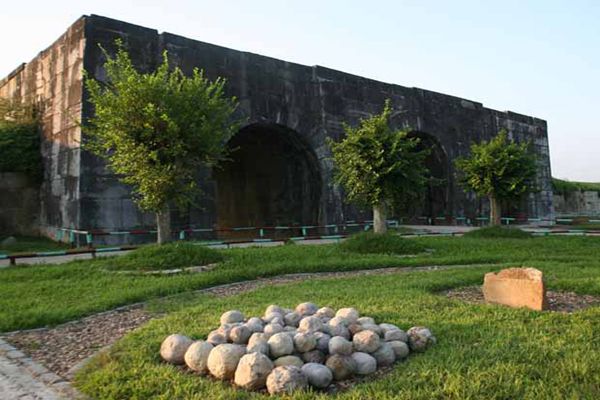Ho Minh Tuan, a culture official, said the project has been hailed by UNESCO as being one of the most successful anywhere in the world.
It has managed to retrieve some key songs and rituals, scientifically document instruments, set up a date base of pictures and recordings, set up a system to train younger generations, and restore the art’s elaborate costumes.
Despite some early efforts to ‘improve’ nha nhac into a symphony-like orchestra, conservationists later agreed to keep its original nature, even if that meant barring women from playing.
“Our forebears had reason to focus on quality rather than quantity,” Dr Tran Van Khe, a renowned traditional music expert, said while criticising this early effort.
“It’s the fine blending of nuances that counts, not the grandeur or resonance.”
“We have no right to modify its form or contents,” he insisted, saying the integration of dan tranh (16-chord zither), dan bau (monochord), and go chen (cup clapping) into nha nhac does not make any sense.
Francoise Riviere, UNESCO’s deputy director in charge of culture, said the nha nhac project is of great value to the organisation since it combines both intangible and tangible heritages, the two pillars in promoting cultural diversity around the world.
“The experiences from the project offer good lessons not only to Vietnam but also the rest of the world,” she said.
“We have covered two thirds of the road,” Dang Van Bai, the country’s cultural heritage czar, said.
But experts said the remaining one third could be very arduous.
Dang Hoang Loan, a former head of the Institute of Music, voiced doubts about recovering the art from just exponents’ memory, saying oral instruction, which is the only way to pass on nha nhac, is not reliable enough.
At the same time, artists, who are custodians of most of the art’s intricacies and form the bulwark of the conservation efforts, have been unable to make a living from it.
Costumes pose another major challenge, with the weaving techniques to make the cloth already lost, given the rigid requirements for them.
The most daunting task, however, is to retrieve the bien chung (bell-like instrument) and bien khanh (stone instrument).
“The last time they were used was during important royal rituals in the early years of the last century,” lamented Phan Thuan Thao, who has spent years studying the instruments, adding that they are no more than historical scrap today.
Thao was referring to the two surviving sets of the instruments kept in the Hue Monuments Museum. They are in such bad repair that they only produce some distorted sounds.
Dr Vu Nhat Thang of the National Academy of Music is concerned with how to restore the instruments or even reproduce them.
Thang said no one knows what they sound like.










(84-63) 3 826042 – (84-63) 3 511142
No 54 Nguyen Dinh Chieu, Ham Tien Central Mui Ne Beach Binh Thuan Vietnam
523 To Hien Thanh District 10 Ho Chi Minh City Vietnam
Ha Long Halong City Quang Ninh Vietnam
A13 Hung Thong 2 Halong City Quang Ninh Vietnam




